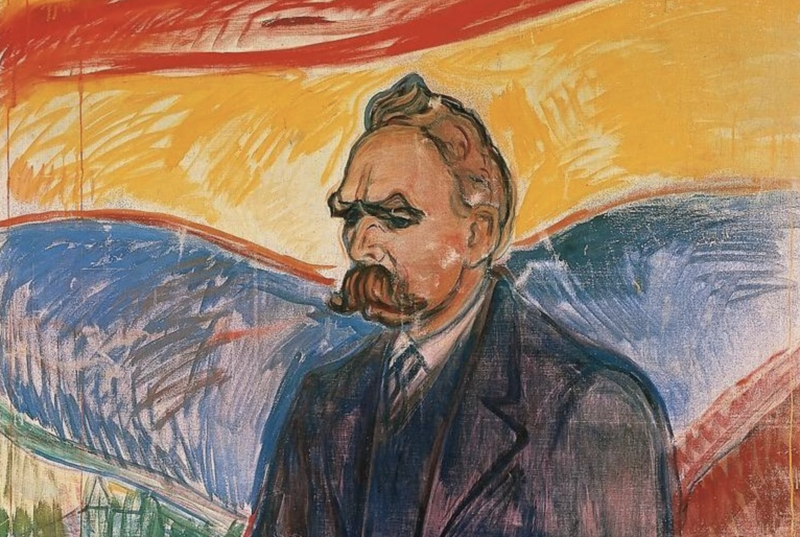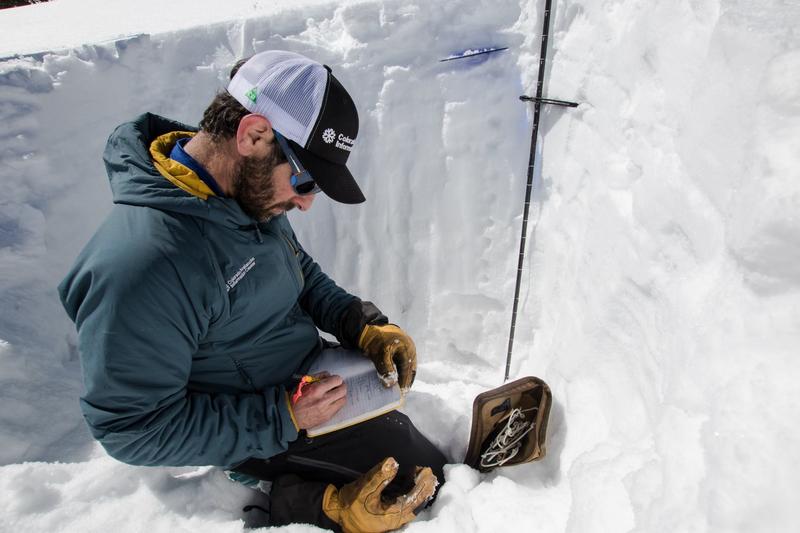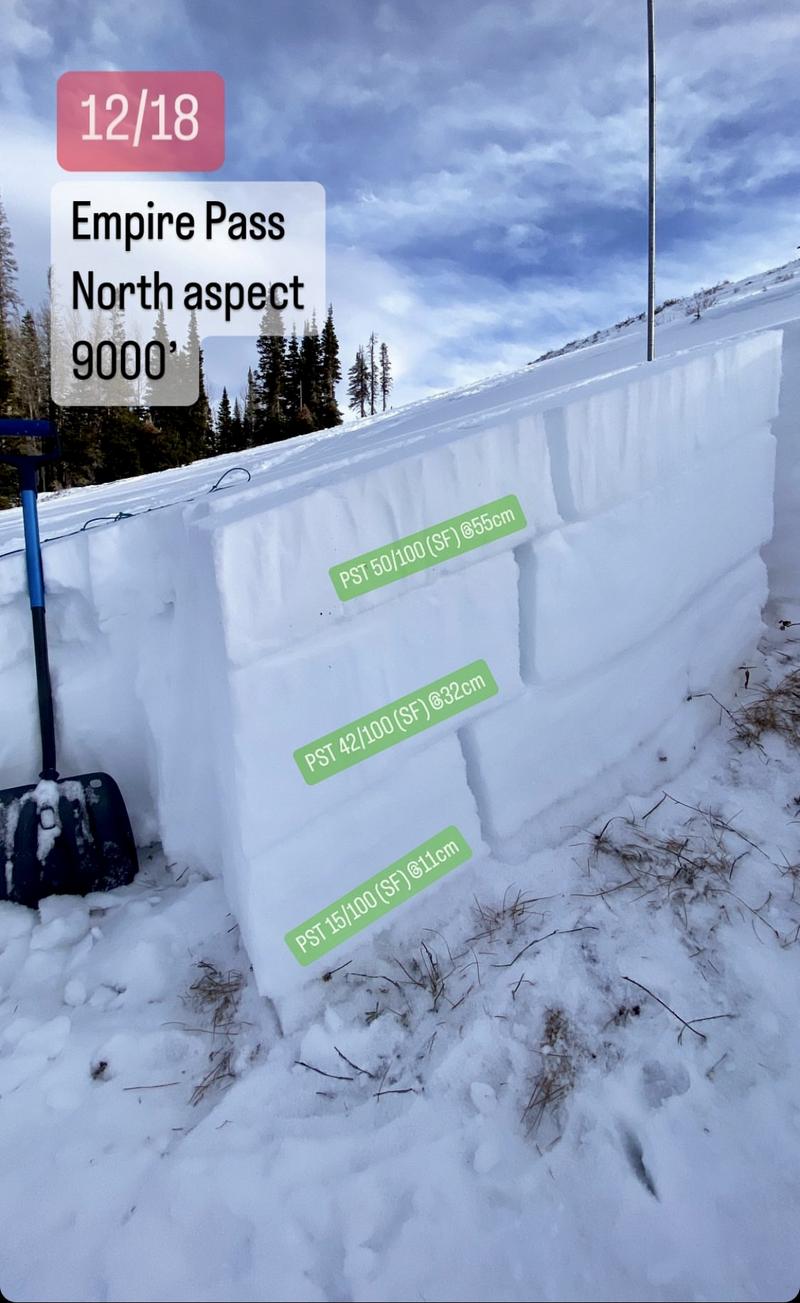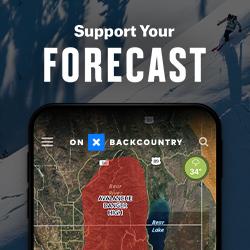
Drew Hardesty
Forecaster
(Originally published in the fall 2023 issue of The Avalanche Review)
~~~~~~~~~~~~~~~~~~~~~~~~~~~~~~~~~~~~~~~~~~~~~~~~~~~~~~~~~~~~~~~~~~

(Introduction: When I asked Colorado avalanche forecaster and researcher Jason Konigsberg to look over a short avalanche essay that involved God and Nietzsche, he said, Sure, but I don’t know much about those guys…)
~~~~~~~~~~~~~~~
Bluebird. I’m near the top of Empire. A beautiful white canvas of avalanche terrain. My second Extended Column Test of the day without full propagation. Propagation Saw Tests are…arresting…with slab fracture. We haven’t heard of any avalanches triggered on this layer of facets for a week now. I’m prepared to say the layer is dormant when I’m reminded of the old joke with God and Nietzsche.
After years of deep contemplation, the German philosopher Friedrich Nietzsche declared that God is dead*. Weeks later, God declared that Nietzsche was dead.
~~~~~~~~~~~~~~~
Bluebird. I’m near the top of Empire. A beautiful white canvas of avalanche terrain. My second Extended Column Test of the day without full propagation. Propagation Saw Tests are…arresting…with slab fracture. We haven’t heard of any avalanches triggered on this layer of facets for a week now. I’m prepared to say the layer is dormant when I’m reminded of the old joke with God and Nietzsche.
After years of deep contemplation, the German philosopher Friedrich Nietzsche declared that God is dead*. Weeks later, God declared that Nietzsche was dead.
So.
How do we know when a buried persistent weak layer is dormant? This has been a tough and troubling problem for avalanche forecasters and professionals for a long time.
How do we know when a buried persistent weak layer is dormant? This has been a tough and troubling problem for avalanche forecasters and professionals for a long time.
Let’s look at a checklist -
°Cracking?
°Collapsing?
°Recent Avalanches?
°Poor structure? (See Ian McCammon’s Lemons and Dave Richards’ Grom Score)
Colorado avalanche forecaster Jason Konigsberg's research a few years ago looked at exactly this problem.

When I asked him about his research a little while ago, Jason said, "We looked at the frequency distribution of avalanches on persistent weak layers and days since a loading event. We found that there were very few avalanches on persistent weak layers after seven days without loading. There were even fewer after ten days without loading. The “seven days without loading” was never meant to be used as a singular metric. In our research, we questioned whether the results we found can be used in avalanche forecasting as an additional metric to your bullet points above.

When I asked him about his research a little while ago, Jason said, "We looked at the frequency distribution of avalanches on persistent weak layers and days since a loading event. We found that there were very few avalanches on persistent weak layers after seven days without loading. There were even fewer after ten days without loading. The “seven days without loading” was never meant to be used as a singular metric. In our research, we questioned whether the results we found can be used in avalanche forecasting as an additional metric to your bullet points above.
As with anything when we are judging snowpack stability and avalanche danger, there is rarely an easy answer or a simple formula. Our research was meant to be just one of many tools in the toolbox.
The Bottom Line - the avalanche danger can reach Low with buried persistent weak layers. This situation has occurred numerous times in my years of forecasting in Colorado. Low danger means generally safe avalanche conditions. When a forecast center drops the danger to Low, they have to have high confidence. Using more data and ALL of the data, can help us get there."
The Bottom Line - the avalanche danger can reach Low with buried persistent weak layers. This situation has occurred numerous times in my years of forecasting in Colorado. Low danger means generally safe avalanche conditions. When a forecast center drops the danger to Low, they have to have high confidence. Using more data and ALL of the data, can help us get there."

(pc: Bo Torrey from a previous winter)
I think of Jason, Nietzsche and God and look down at the white canvas of Empire. I kick turn and shuffle back to the ridge.
❄️❄️❄️
*Nietzsche’s first mention that “Gott ist tot” (after all, he was German) was in 1882, when he was 38 years old. He suffered a debilitating stroke seven years later and lived the rest of his life - mostly infirm - with his mother. He died in 1900. One can interpret the phrase as that the Age of Enlightenment had effectively dismantled religion and by proxy, a possible foundation for ethical guidelines and morals for everyday life.




Leave a comment
Comments